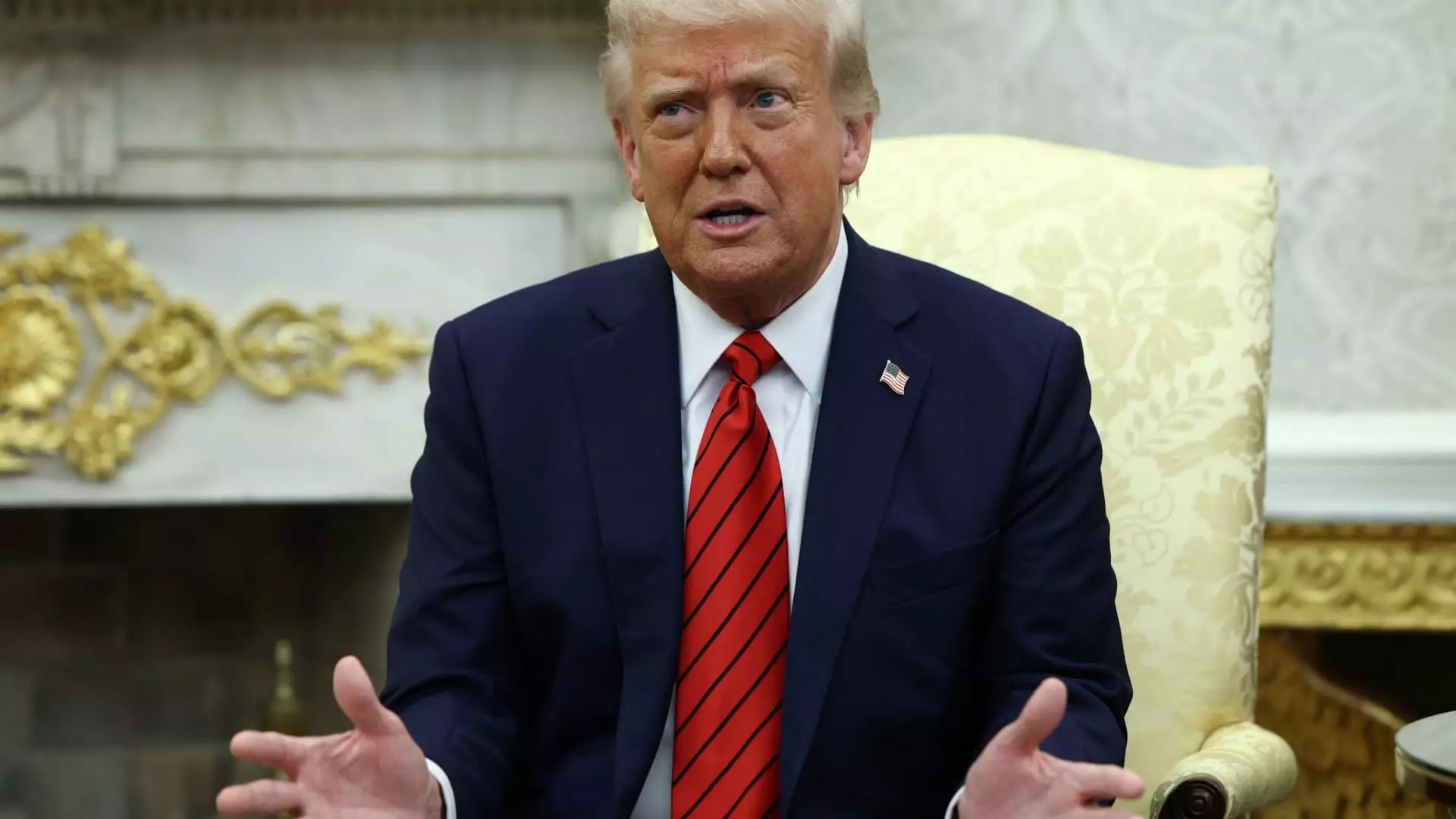The initial shockwaves sent through the stock market following President Donald Trump’s April 2 tariff announcements seem to have somewhat subsided. Yet beneath this calm facade, investors remain plagued by anxiety, and it’s not unjustified. The situation indicates a complicated web of uncertainty, where optimism is frequently quashed by harsh realities. The tariffs, framed as a strategy for a more favorable trade relationship, have created conditions that are chaotic and unpredictable. Investors find themselves questioning whether any of their beloved stocks are truly insulated from the brewing storm, as discussions about trade deals linger without solid results.
Despite the White House’s assurances of ongoing negotiations with countries like Japan, specifics remain nebulous—an unsettling reality for investors desperate for clarity. Scott Welch, chief investment officer of Certuity, aptly summarized the situation by highlighting the lack of tangible results from these negotiations. The rhetoric surrounding impending deals generates a veneer of hope, but falling short of concrete agreements leaves market participants disillusioned. Only time will tell whether these discussions will yield fruitful outcomes, or if they will merely serve to prolong investor unease.
Sector-Specific Risks and Company Vulnerabilities
An area of particular concern that accompanies tariff discussions is how they could impact individual companies, especially those firmly entrenched in high-stakes sectors such as technology and manufacturing. The recent announcement by Nvidia of a staggering $5.5 billion charge tied to stringent export limitations highlights this risk. With stock prices fluctuating wildly—dropping 6.9% in one day alone—companies are finding their valuation tethered to the whims of trade negotiations. This reality poses significant risks not only to Nvidia but also to other major players in the technology sector who find themselves in similar predicaments.
Stacy Rasgon’s observation regarding the “Trump rug” reflects the underlying instability that many investors experience. These negotiations have a peculiar characteristic: they intertwine diverse elements, including unrelated issues like financing natural gas projects or the sale of TikTok, thereby convoluting the prospects of many stocks. When the economic landscape becomes so unpredictable, any news can lead to drastic fluctuations, causing panic among investors. As the markets deal with the repercussions of sector-specific tariffs, there is a notable hesitance to invest heavily when the risks remain too high.
Global Investor Sentiment: A Retreat from U.S. Assets
As U.S.-China relations remain strained, global investors show signs of retreating from American assets. This trend is troubling for our domestic markets, as the outflow of foreign capital tends to create downward pressure on stock prices. Lawrence McDonald, founder of the Bear Traps Report, encapsulated this sentiment well. This hesitancy to engage with U.S. stock markets signifies more than mere investor apprehension—it indicates a critical shift in the global financial ecosystem.
Indeed, when a “stop-start” approach to trade negotiations prevails, it may temporarily bolster retail investors’ confidence but create an insurmountable wall for large-scale global investors looking for stable returns. By doing little more than stalling without significant outcomes, the administration effectively alienates those who might otherwise bolster the economy.
Earnings Season: A Barometer for Real Market Sentiments
The onset of earnings season introduces another layer of complexity as corporate executives brace themselves to navigate the treacherous waters of investor expectations in light of worsening global trade conditions. Businesses may find themselves grappling with the daunting task of forecasting future earnings when uncertainty has become the name of the game. In an environment fraught with unpredictability, many would rather play it safe than risk overpromising.
Some companies may adopt a dual-forecast strategy, while others might completely avoid giving projections. The insights shared during this period could very well reveal vulnerabilities that Wall Street might currently overlook. As Trivariate Research’s Adam Parker highlights, investors digested the harsh reality of penalties associated with negative earnings revisions. The repercussions of announcing disappointing earnings in today’s sensitive market climate have proven to be both severe and swift, leading to drastic sell-offs and heightened volatility.
The market exists in a fragile state where even whispers of negative news can trigger a cascade of selling. The perspective that only one in twenty-five months has seen such severe reactions amplifies the tense undercurrents of trading. As foreign investors gauge risk and domestic stakeholders position themselves amidst choppy waters, the overarching sentiment remains rooted in an atmosphere of fear and doubt as the tumultuous trade war continues to unfold.

